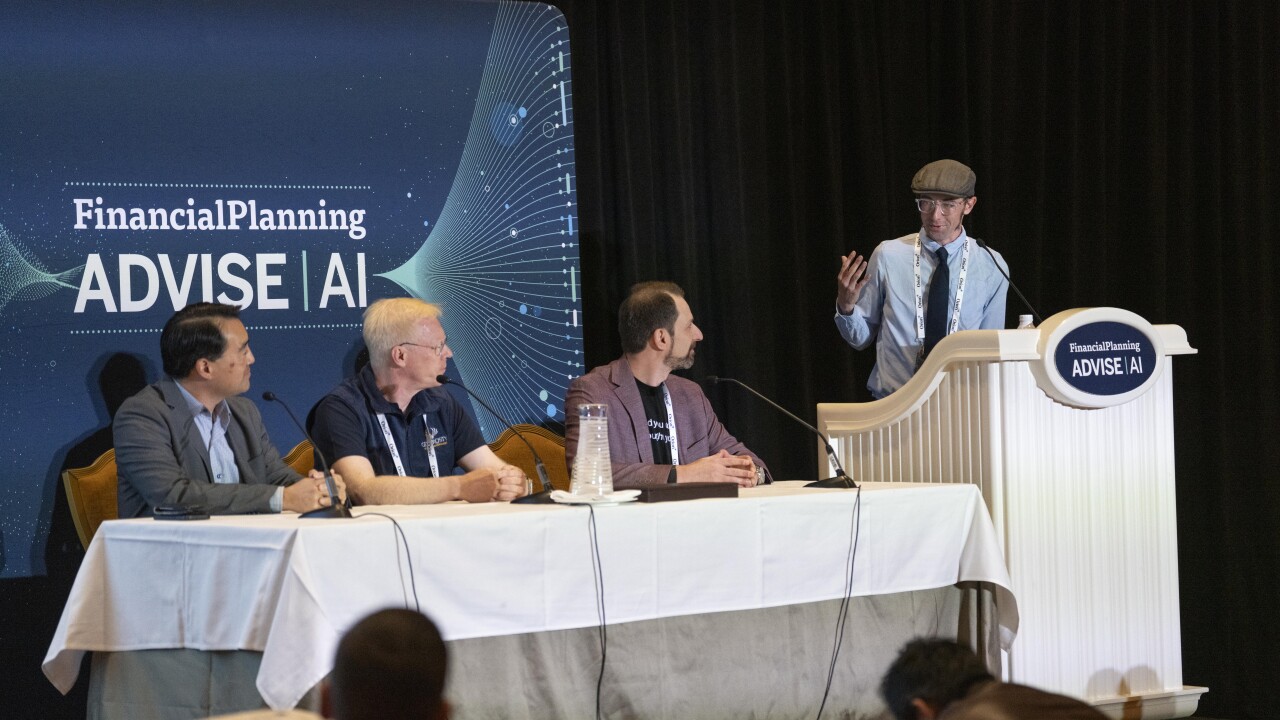DALLAS -- Bank executives and a handful of third-party service providers convened here last week to attend a separately managed account conference focused on how banks can penetrate a space heavily dominated by the major wirehouses.
The event, co-sponsored by the Money Management Institute and Thomson Media, kicked off with Jeff Cusack, executive vice president of national sales and marketing at JP Morgan Private Client Services, and Len Reinhart, president of Lockwood, providing an overview of the current SMA landscape as well as the necessary building blocks of a viable SMA business.
The first decision banks or other financial institutions must make is whether to build, buy or rent an SMA platform. Building carries significant cost, particularly when it comes to the technology infrastructure. Cusack noted that in order to be considered a true player in the SMA market, a firm has to amass $3 billion to $5 billion in assets within two years.
Access to money managers is a crucial step in putting together a viable SMA offering. Money managers often abstain from participating on a smaller platform due to their tighter margins and limited scalability. On the upside, however, Cusack predicted that the cost of third-party providers will go down and the quality of those providers will increase as competition grows along with assets.
One pitfall Cusack observed within the SMA industry is the use of so-called "business silos" in which employees report up and out of a regional office to a director situated in a different locale. He identified silos as an impediment to conducting business and said that a better solution would be to have a director stationed in that particular office for the sake of cohesion.
Reinhart posed the question, "Are SMAs better than mutual funds?" His reply was, "Absolutely not. They're just different," noting the difference in level of customization.
Reinhart, known as one of the pioneers of the SMA industry, outlined a few considerations for banks mulling an SMA platform, including the regulation and compliance burden, targeting the right clients and setting the right goals. Banks with an SMA offering would fall under the jurisdiction of three watchdogs: bank regulators, the Securities and Exchange Commission and the National Association of Securities Dealers.
However, what really makes a managed account platform work can be pinned to four key building blocks, according to Reinhart. The first part is educational training. "No one has ever walked into my office clutching a pile of money demanding an SMA," Reinhart said. "It's a sold product."
"You have to build the internal sales force, otherwise you're toast," said Jim Seuffert, chief operating officer at Lockwood. "You need to teach people how to sell."
In order to capture the high-net-worth client, Maureen Wilke thought it best to give the customer a reason to select your bank. She suggested banks integrate branding and high-net-worth client profiles as the first step in positioning for an SMA offering. She recommended using a team approach, calling it "the wave of the future" and aligning those teams by training them on client-centered solutions and the SMA process. She encouraged conference attendees to bring this message back to their respective firms: "Focus on life events and not just returns."
The second building block is compensation, which Kristine Garrett, senior vice president and regional director of JP Morgan Chase PCS, argued should be comprised of two-thirds cash and one-third restricted shares of stock, three years fully vested for members of the team. She also recommended that each team have a "quarterback" responsible for accounts worth $10 million and up.
The third stepping stone in building a successful SMA business plan centers on recruitment of talent. "You can't recruit unless you get a lot of the other pieces right," said George Wilbanks, managing director of Russell Reynolds. For starters, he said firms have to create an environment that fosters success. He also urged new entrants to offer an integrated product platform and to align management and compensation policies with target client universes. Wilbanks stressed the importance of having a good rapport with people, calling human capital "the only substantial competitive advantage."
Ultimately, it comes down to having commitment from the top. "You need the support of senior leadership," Wilbanks said. "You can't have one toe in, and one toe out." He also reminded the audience that culture doesn't happen overnight, but rather it is forged over time. But if you know your competition, have your recruiting game active, focus on long-range planning and respond aggressively to unplanned opportunities, you can avoid being an "also ran," he said.
Lastly, and certainly the most expensive building block is ops and tech, a lengthy undertaking that requires a big investment that is hard to implement. Reinhart dubbed this the "largest barrier to entry." Currently, SMAs operate on different-scale tracks that make connectivity difficult. Integrating front-end software with middleware and back-end operations make up what Reinhart calls the "Holy Grail." Standardization of industry practices is not yet a reality, he conceded, but the industry is moving closer and closer.





